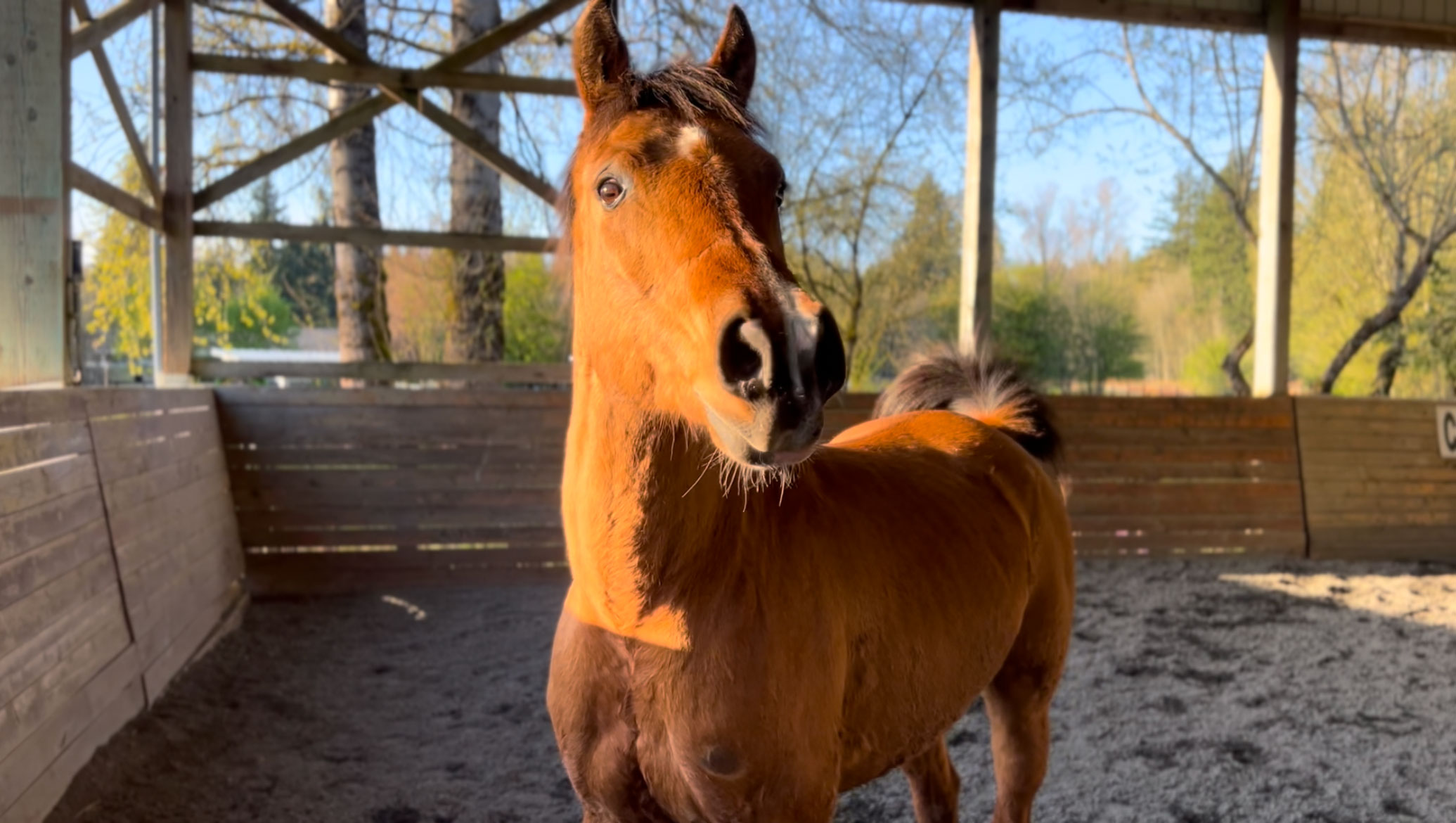Figuring out horses is a thing we have to do a lot here at SAFE. Rarely do they come with instructions. Their histories often begin at the point where they’re rescued, and we can usually only guess at what their lives were like before. We watch for clues or hints. We reinforce the good behaviors, and discourage the bad. When past neglect has been a factor in shaping a horse’s personality, we may have to convince a horse that he or she really truly is a good horse. With enough encouragement and support, eventually we can help improve their self-image and make life a little more comfortable for them.
This is a challenge that we’re facing with Henry. This handsome Arabian gelding experiences a lot of anxiety. When we met him, he was reluctant to be caught. Of the 15 horses we rounded up and loaded into trailers that day, Henry was last to be haltered and last to be loaded. Once home at SAFE, he was shy around his paddock cleaners, and only seemed truly enthusiastic about the arrival of Kaya with his breakfast. I started working with him regularly in the round pen, and pretty soon, he would meet me at his gate and help me put on his halter when I came to fetch him. When I exposed him to new situations, he would react with anxiety, but seemed to take some degree of comfort when I’d reassure him. Eventually he was able to participate in a Joel Conner clinic with 12 other horses in the arena, and relax enough to actually listen and learn. Things were looking up.
For the first six months at SAFE, Henry lived in a one-horse paddock between two mares, and he seemed pretty content and comfortable with that set up. In April, he was moved to a bigger paddock that he shared with Jax and Picasso, two geldings from the herd he was rescued with. Right away we noticed that Henry kept his distance from the two other boys, preferring to stand by the gate and gaze over the fences at Darla, Zelly, and other mares. And when he was taken out of his paddock for groundwork sessions, he began displaying some rather annoying herd bound behaviors. He was distracted, looking across the farm for his friends and calling for them repeatedly. Getting him to focus on his handler was a huge challenge. He still remembered his ground work, but at the slightest release, his head would shoot up, he’d focus off into the distance, and he’d holler at the top of his lungs, often right in my ear…
So it’s back to the drawing board with Henry. He’s been moved back to a one-horse paddock, though not the same one he occupied before. He gets worked 5–6 days each week. He practices standing tied, and he needs a lot more practice because he does not yet choose to stand quietly. He’s trotted over poles, worked on the ground, and he’s even learning to load into the trailer. The thing about Henry is that when he’s capable of focusing, he’s a lovely horse. He’s light, responsive, and quite easy to move and direct. So we’ll keep working with him, and hopefully his anxiety will lessen as he gains confidence in himself. This is one of the outcomes that our horsemanship methods encourage, and we’ve seen many a herd-bound horse lose its anxiety as new behaviors are developed and confidence is gained. Henry is a smart, sensitive horse, and he will be just fine.


